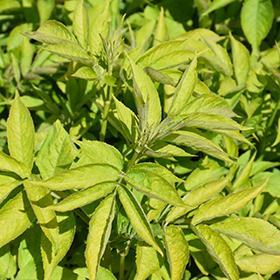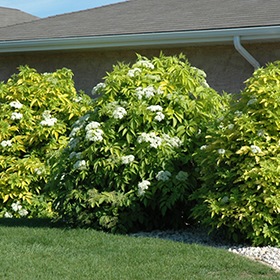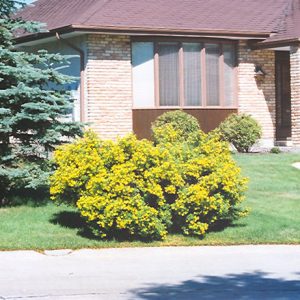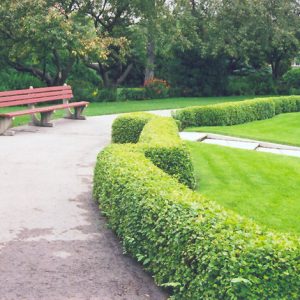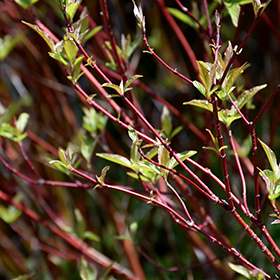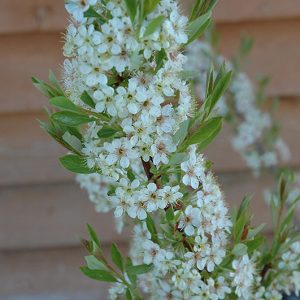Description
Growth & Care
| USDA Plant Hardiness Zone | 3a |
| Growth Rate | Fast |
| Recommended Pruning Method | Late Winter Pruning |
Foliage
| Foliage Type | Deciduous |
| Plant Form | Upright Spreading |
Flowers
| Flower Period | Summer |
| Flower Color | Yellow |
| Flower Fragrance | Medium |
Additional Categories
| Additional Category | Elder |
| Landscape Application | Accent, Massing, Screening, Garden, Naturalizing |
Details
Planting & Growing
Golden American Elder will grow to be about 10 feet tall at maturity, with a spread of 8 feet. It tends to be a little leggy, with a typical clearance of 2 feet from the ground, and is suitable for planting under power lines. It grows at a fast rate, and under ideal conditions can be expected to live for approximately 30 years.
This shrub does best in full sun to partial shade. It is very adaptable to both dry and moist locations, and should do just fine under average home landscape conditions. It is not particular as to soil type or pH. It is highly tolerant of urban pollution and will even thrive in inner city environments. This is a selection of a native North American species.
Landscape Attributes
Golden American Elder is a multi-stemmed deciduous shrub with an upright spreading habit of growth. Its relatively coarse texture can be used to stand it apart from other landscape plants with finer foliage.
This is a high maintenance shrub that will require regular care and upkeep, and is best pruned in late winter once the threat of extreme cold has passed. It is a good choice for attracting birds to your yard. Gardeners should be aware of the following characteristic(s) that may warrant special consideration:
Suckering
Golden American Elder is recommended for the following landscape applications:
Accent, Mass Planting, Hedges/Screening, General Garden Use, Naturalizing And Woodland Gardens
Ornamental Features
Golden American Elder features showy clusters of lightly-scented creamy white flowers held atop the branches in early summer. It has attractive yellow deciduous foliage. The compound leaves are highly ornamental but do not develop any appreciable fall color. The red fruits are held in clusters in early fall.
